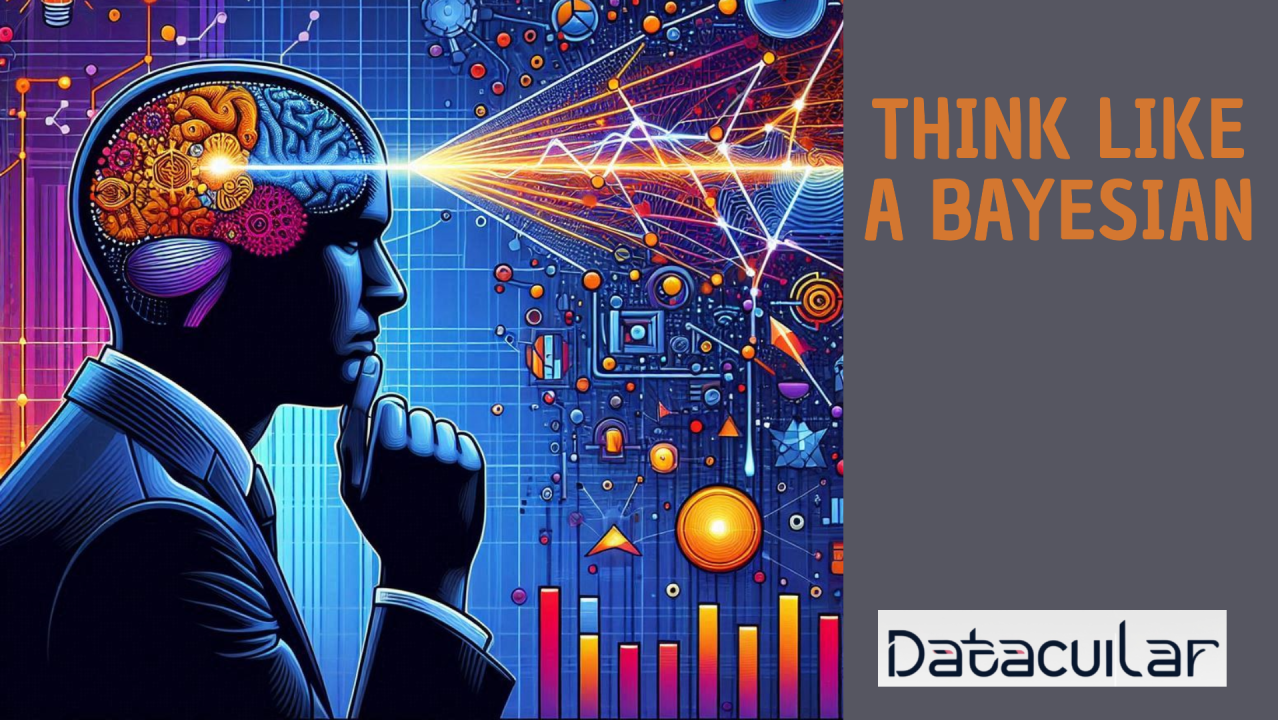
Bayesian Thinking in Modern Data Science
Sohil Gandhi
Director P&L at WhiteHat Jr & Toppr (Acq: Byjus) | Leading Growth Initiatives across Markets | AI Generalist | Business-Finance & Strategy | Data Science | Productivity
Introduction to Bayesian Thinking
Bayesian thinking is an approach rooted in probability and statistics, allowing individuals to update their beliefs based on new evidence. It’s akin to being a detective, where every new clue influences the initial hypothesis. In data science, Bayesian thinking is essential for making predictions and decisions under uncertainty, which is prevalent in fields like artificial intelligence (AI) and statistical analysis.
Let’s dive into a practical example to see Bayesian thinking in action. Imagine you're playing a guessing game with the stock market. The stock market is a vast and volatile arena where prices of stocks fluctuate based on numerous factors such as news, economic conditions, and historical trends.
Playing the Stock Market with Bayesian Thinking
Think of the stock market as a game of smart guessing. Here’s how you can apply Bayesian thinking:
Bayesian thinking enables you to refine your predictions continually as new data becomes available. This method is particularly powerful in the stock market, where decisions must adapt to rapidly changing conditions.
Fundamentals of Bayesian Theory
Bayesian theory is based on the principle that the probability of an event can be updated as new evidence is acquired. This is encapsulated in Bayes’ Theorem, which is central to Bayesian inference and decision-making.
Key Terms in Bayesian Theory
Bayes’ Theorem
Bayes’ Theorem mathematically expresses how to update the probability of a hypothesis based on new evidence:
P(A∣B)= [P(B∣A)×P(A)] ÷ P(B)
Where:
Applications of Bayesian Methods in Data Science
Bayesian methods have a wide range of applications in data science, helping to manage uncertainty and make more informed decisions. Let's explore some key applications.
1. Bayesian Inference
Bayesian inference is a statistical method that updates the probability of a hypothesis as more evidence or data becomes available. This approach is particularly useful in fields where uncertainty is inherent, such as medicine and finance.
领英推荐
Real-World Example: Clinical Trials
In clinical trials, Bayesian methods can estimate the effectiveness of a new treatment by combining prior knowledge (from past studies) with current data (from the ongoing trial). This continuous updating process helps researchers make better-informed decisions about the efficacy and safety of a treatment. For instance, if initial results show promise, researchers might increase the sample size or alter the study design to further investigate.
2. Predictive Modeling and Uncertainty Quantification
Predictive modeling involves using statistical techniques to predict future outcomes based on historical data. Bayesian methods enhance these models by quantifying uncertainty, providing not just a prediction but also the confidence level of that prediction.
Real-World Example: Stock Market Predictions
Bayesian regression can be used to predict stock prices. Unlike traditional methods that provide a single point estimate, Bayesian regression offers a range of potential prices along with probabilities. This range helps traders assess risks and make more informed investment decisions, balancing potential gains with the likelihood of various outcomes.
3. Bayesian Neural Networks
Bayesian Neural Networks (BNNs) extend traditional neural networks by incorporating uncertainty into the model’s parameters. This approach allows BNNs to provide probabilistic outputs, which is invaluable in applications requiring risk assessment and decision-making under uncertainty.
Real-World Example: Fraud Detection
In fraud detection, Bayesian networks analyze various factors such as transaction history and user behavior to identify patterns that might indicate fraudulent activity. Unlike traditional methods that flag transactions based on rigid rules, Bayesian networks adapt to new data, improving their accuracy and reducing false positives over time.
Tools and Libraries for Bayesian Analysis
Modern data science provides several tools and libraries for implementing Bayesian methods effectively:
Implementing Bayesian Linear Regression with PyMC4
To illustrate Bayesian methods in action, let’s implement a Bayesian linear regression model using PyMC4:
import pymc as pm
import numpy as np
# Generate synthetic data
np.random.seed(42)
X = np.linspace(0, 1, 100)
true_intercept = 1
true_slope = 2
y = true_intercept + true_slope * X + np.random.normal(scale=0.5, size=len(X))
# Define the model
with pm.Model() as model:
# Priors for unknown model parameters
intercept = pm.Normal("intercept", mu=0, sigma=10)
slope = pm.Normal("slope", mu=0, sigma=10)
sigma = pm.HalfNormal("sigma", sigma=1)
# Likelihood (sampling distribution) of observations
mu = intercept + slope * X
likelihood = pm.Normal("y", mu=mu, sigma=sigma, observed=y)
# Inference
trace = pm.sample(2000, return_inferencedata=True)
# Summarize the results
print(pm.summary(trace))
Step-by-Step Breakdown:
Wrapping Up
Bayesian methods revolutionize decision-making by combining prior beliefs with new evidence, making them essential for predictive accuracy and managing uncertainty in various domains. Tools like PyMC4, Stan, and TensorFlow Probability empower data scientists to build robust, probabilistic models from complex datasets, enhancing both understanding and confidence in predictions.
Whether you're forecasting stock prices, evaluating new medical treatments, or detecting fraud, Bayesian thinking provides a powerful framework for making smarter, data-driven decisions.
Co-founder & CEO at M1-development | Ukrainian WordPress, Webflow & Shopify experts
2 个月Excited to improve my data science skills with this unique perspective on predictions and decisions.
Marketing at Dragon Ventures
2 个月This sounds fascinating, Bayesian thinking really could revolutionize decision-making in many fields!
Paid ads that convert for businesses with $20K+ ad budgets.
2 个月Such an insightful post - updating beliefs with new evidence is crucial for accuracy.
Copywriter | Email Marketer | Digital Specialist | Helping Entrepreneurs, Founders & Industry professionals to build personal brand, thought leadership and generate leads.
2 个月Bayesian methods handling uncertainty like a pro? Sign me up!
Founder of Mental Health Simplified - Leveraging Lived Experience - Transformational Coach | Speaker - I COACH professionals through the DARKEST moments of their life.
2 个月Can't wait to see the real-life case studies and examples mentioned here!